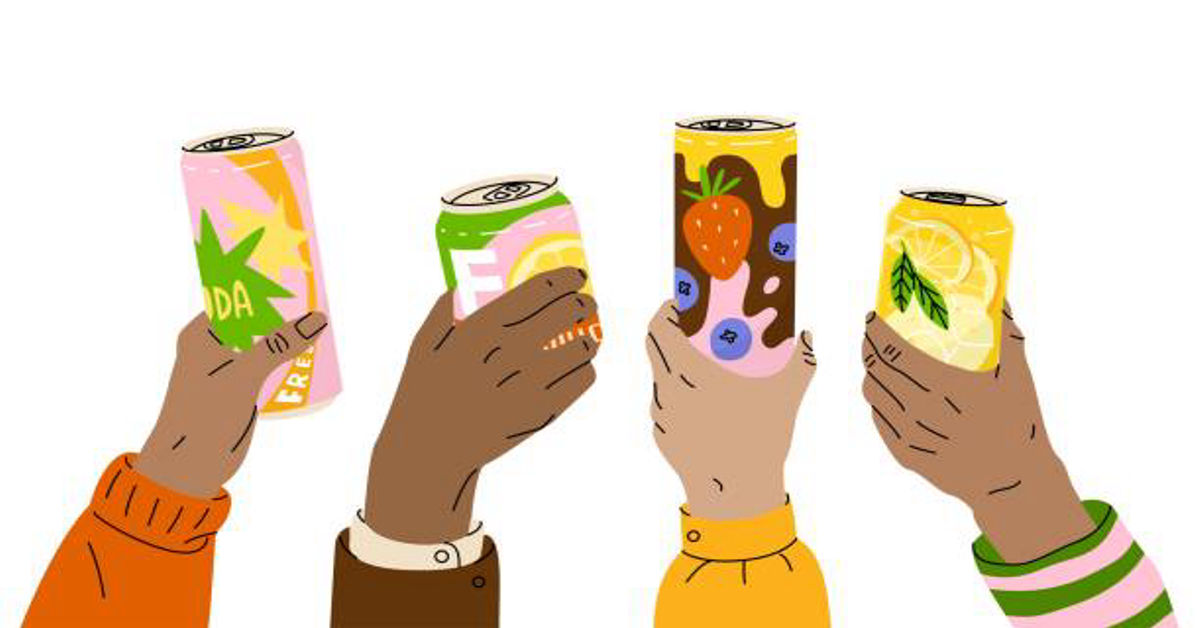Four Loko has become one of the most talked-about alcoholic beverages of the modern era—a product that evokes fascination, controversy, and nostalgia all at once. Known for its vibrant cans, bold flavors, and once notorious reputation, Four Loko represents more than just a drink; it’s a cultural phenomenon that has shaped the way many people perceive flavored alcoholic beverages. Whether you remember it as a wild college party staple or have only seen it on convenience store shelves, Four Loko’s story is an intriguing blend of marketing, chemistry, public perception, and evolving consumer behavior.
In this extensive article, we’ll explore every aspect of Four Loko—from its creation and formulation to its effects, evolution, and cultural impact. You’ll also gain insight into how it became both a cautionary tale and a commercial success story in the world of beverages.
1. The Origins of Four Loko
The story of Four Loko begins with a group of friends and entrepreneurs who wanted to create something that would stand out in a crowded beverage market. The early 2000s saw the rise of energy drinks and flavored malt beverages. The founders recognized an opportunity to blend the two—a drink that combined alcohol with caffeine, giving consumers both stimulation and intoxication.
The name “Four Loko” was inspired by the drink’s original four key ingredients: alcohol, caffeine, taurine, and guarana. These components were intended to deliver both energy and euphoria, appealing to young adults looking for a drink that was both fun and functional.
Four Loko quickly gained popularity on college campuses and among young adults due to its affordability, high alcohol content, and the added stimulant buzz. Early versions of the drink were compared to consuming several beers and a few cups of coffee at once—a combination that made it both thrilling and controversial.
However, this potent blend of stimulant and depressant soon caught the attention of health authorities, leading to a wave of scrutiny and eventual reformulation.
2. The Composition of Four Loko: Ingredients and Formulation
Understanding what goes into Four Loko is essential to appreciating why it became so famous (and infamous). The beverage is classified as a flavored malt beverage (FMB), meaning it is brewed similarly to beer but often flavored and sweetened to taste more like fruit punch or soda.
Below is a breakdown of the modern Four Loko composition and the differences between its original and reformulated versions.
| Component | Original Four Loko (Pre-2010) | Current Four Loko (Post-2010) | Purpose/Effect |
|---|---|---|---|
| Alcohol (Ethanol) | 10–14% ABV | 8–14% ABV (varies by state) | Provides intoxicating effects |
| Caffeine | Added (from guarana/taurine) | Removed | Stimulating effect; banned in alcoholic drinks |
| Sugar & Flavoring | High-fructose syrup and artificial flavors | High-fructose syrup and natural/artificial flavors | Adds sweetness and masks alcohol taste |
| Carbonation | Light to medium | Similar | Enhances refreshment and texture |
| Coloring Agents | Bright, fruit-specific dyes | Still used but regulated | Distinguishes flavors visually |
| Water | Base ingredient | Base ingredient | Acts as solvent and base liquid |
The reformulation removed caffeine, taurine, and guarana following government warnings. The new version retained its fruity taste and high alcohol concentration but dropped the stimulants that caused health concerns.
Even without caffeine, Four Loko remains potent, with alcohol content ranging from 8% to 14% ABV, depending on local regulations. To put that into perspective, one 23.5-ounce can of Four Loko at 12% ABV contains roughly the same alcohol as four to five standard beers—a fact that continues to surprise many consumers.
3. Flavor Variety and Consumer Appeal
Part of Four Loko’s enduring popularity comes from its diverse flavor lineup and creative branding. The brand constantly experiments with bold, candy-like, and tropical flavors that attract adventurous drinkers.
Popular Four Loko Flavors
| Flavor Name | Profile Description | Taste Characteristics |
|---|---|---|
| Fruit Punch | Classic and sweet | Reminiscent of tropical punch and cherry |
| Watermelon | Refreshing summer taste | Juicy and slightly tart |
| Blue Razz | Berry blend | Sweet, tangy, and electric blue |
| Peach | Smooth and mild | Sweet with subtle fruit notes |
| Gold | Unique signature flavor | Honey-like, similar to an energy drink |
| Sour Apple | Tart and crisp | Green apple candy flavor |
| Strawberry Lemonade | Balanced sweetness and citrus | Refreshing and light |
| Black Cherry | Deep fruit notes | Rich, sweet, and slightly bitter finish |
These flavor names and profiles cater to young adults who prefer drinks that don’t taste strongly of alcohol. The vivid can designs and colorful branding reinforce the drink’s image as energetic, rebellious, and fun—qualities that have defined its marketing approach.
4. The Rise and Controversy: A Beverage Under Fire
Four Loko’s rise to fame came with a storm of criticism. Early versions of the drink contained caffeine and other stimulants, creating a “wide-awake drunk” effect. Many users reported feeling alert despite being heavily intoxicated, which increased the risk of excessive drinking and accidents.
By 2010, several college incidents and health-related cases had drawn national attention to the drink. Reports linked Four Loko to alcohol poisoning, risky behavior, and emergency hospitalizations. Critics argued that the combination of caffeine and alcohol masked the signs of drunkenness, leading individuals to underestimate their level of intoxication.
In response, the U.S. Food and Drug Administration (FDA) and the Federal Trade Commission (FTC) investigated caffeine-infused alcoholic beverages. Four Loko, along with similar products, received formal warnings. The brand voluntarily removed caffeine, taurine, and guarana from its formula to comply with new regulations.
Despite the controversy, this period cemented Four Loko’s cultural identity—it became a symbol of rebellion, nightlife, and youth excess. Ironically, the public outcry only made the drink more famous.
5. The Reformulated Four Loko: A Second Life
After the reformulation, many predicted that Four Loko would fade into obscurity. Instead, it adapted and thrived. The company reintroduced the drink without caffeine but maintained its high alcohol concentration and signature fruity taste.
The modern Four Loko focuses on flavor innovation and party-oriented marketing rather than controversy. It now competes in the same segment as other flavored malt beverages such as Mike’s Hard Lemonade, Smirnoff Ice, and White Claw Surge.
Marketing shifted toward humor, nostalgia, and self-awareness, embracing its wild history while appealing to a new generation that grew up hearing about its legend.
6. Alcohol Content and Serving Size: Understanding the Strength
One of the reasons Four Loko remains potent is its alcohol by volume (ABV) content. Unlike typical beers that range between 4% and 6% ABV, Four Loko cans often contain 8–14% ABV depending on regional restrictions.
Let’s compare its strength with other common alcoholic beverages:
| Beverage Type | Typical ABV (%) | Average Serving (oz) | Equivalent Alcohol Units to One Four Loko (23.5 oz, 12% ABV) |
|---|---|---|---|
| Regular Beer | 5% | 12 oz | 4.5 cans |
| Wine | 12% | 5 oz | 4.7 glasses |
| Hard Seltzer | 5% | 12 oz | 4.5 cans |
| Four-Loko | 8–14% | 23.5 oz | 1 full can = ~5 standard drinks |
As the table shows, consuming one full can of Four-Loko can equal four to five standard drinks in a single serving. This concentration explains why even experienced drinkers are advised to consume it slowly and responsibly.
7. Effects on the Body: Alcohol and Energy Interactions
Although caffeine has been removed, Four-Loko’s original reputation was built around its mixed stimulant-depressant effects. Understanding how alcohol affects the body helps explain the controversy that once surrounded it.
a. Alcohol as a Depressant
Alcohol primarily affects the central nervous system by slowing brain activity. It reduces inhibitions, impairs coordination, and impacts judgment. The more consumed, the stronger the sedative effect becomes.
b. Caffeine as a Stimulant (Original Version Only)
Caffeine stimulates the nervous system, increasing alertness and energy. When combined with alcohol, it can disguise intoxication levels, leading drinkers to underestimate how impaired they are.
c. Current Formula Effects
Modern Four-Loko produces effects consistent with any high-alcohol beverage: relaxation, warmth, mood elevation, and eventually drowsiness or intoxication. Its sweet taste often leads to quicker consumption, so pacing is crucial to avoid overconsumption.
The caloric content is also notable—most Four-Loko flavors contain between 400–600 calories per can, largely from sugar and alcohol. For health-conscious drinkers, this is worth keeping in mind.
8. Four Loko in Popular Culture
Few beverages have achieved the cultural fame—or infamy—of Four-Loko. During its peak years, it became a viral symbol of youthful recklessness, featured in memes, music lyrics, and social media posts.
College students nicknamed it “blackout in a can”, while others treated it as a rite of passage. Even after reformulation, the brand’s association with wild nights persisted, creating a nostalgic aura for those who experienced its early days.
Four-Loko’s cultural influence spread globally. The drink became a collector’s item in some regions after being temporarily banned, and references to it appear in movies, songs, and comedy routines. Rather than shy away from this reputation, the company cleverly leaned into it, turning controversy into identity.
9. Marketing and Branding Strategy
Four Loko’s branding has always been unapologetically bold. The bright camouflage-like can designs, loud colors, and edgy typography signal excitement, energy, and rebellion. The brand’s marketing strategy targets young adults aged 21–30, focusing on individuality, humor, and nightlife.
Four Loko’s slogans and campaigns often use self-aware, ironic humor, embracing the drink’s chaotic legacy. Rather than distancing itself from controversy, the brand reframed it as nostalgia and authenticity.
Social media also plays a vital role—memes, challenges, and fan-submitted content have kept the beverage relevant in digital culture. In an era where viral marketing matters more than traditional ads, Four Loko thrives on being unpredictable and unapologetically loud.
10. Health Considerations and Responsible Consumption
Despite its playful image, Four Loko is still an alcoholic beverage with significant potency, and awareness of health effects is important.
a. Short-Term Risks
- Rapid intoxication due to high alcohol content
- Dehydration and hangovers from sugar-alcohol combination
- Impaired coordination and decision-making
- Alcohol poisoning if consumed excessively
b. Long-Term Risks
Regular overconsumption can contribute to:
- Liver strain and damage
- Weight gain from high sugar and calories
- Dependency or tolerance buildup
- Negative impacts on sleep and mood
c. Tips for Responsible Drinking
- Drink slowly and avoid finishing the entire can in one sitting.
- Eat before drinking to slow absorption.
- Avoid mixing with caffeine or other stimulants.
- Stay hydrated between drinks.
- Know your limits and never drive after consumption.
Four Loko, like any alcoholic beverage, can be part of social enjoyment if approached with awareness and moderation.
11. Comparison with Other Alcoholic Beverages
Let’s see how Four Loko compares with other popular drinks in terms of alcohol strength, price, and purpose.
| Beverage | Average ABV | Average Price (per serving) | Intended Market | Flavor Profile |
|---|---|---|---|---|
| Four Loko | 8–14% | $2–4 | Young adults, party drinkers | Sweet, fruity, strong |
| Smirnoff Ice | 5% | $2–3 | Light drinkers | Citrus, crisp |
| Mike’s Hard Lemonade | 5% | $2–3 | Casual consumers | Sweet, lemony |
| White Claw Surge | 8% | $3–4 | Seltzer drinkers | Lightly flavored, bubbly |
| Beer (average) | 5% | $1–2 | General | Malty, bitter or light |
From the comparison, it’s clear that Four Loko’s value proposition lies in its high alcohol-to-cost ratio and strong flavor appeal. Its distinctiveness is not subtlety—it’s intensity.
12. Legal Regulations and Regional Variations
Four Loko’s legal journey has been eventful. In the early 2010s, multiple U.S. states and college campuses banned or restricted sales of caffeinated alcoholic beverages. After reformulation, Four Loko complied with federal standards and regained widespread distribution.
Today, alcohol content limits vary by state. For example:
- Some states cap Four Loko at 8% or 10% ABV.
- Others allow the full 14% ABV version.
Internationally, Four Loko is sold in several countries, though formulations may differ to meet local alcohol laws and labeling requirements.
13. Packaging and Presentation
The visual design of Four Loko cans has become iconic. The tall 23.5-ounce aluminum cans are instantly recognizable due to their bright, abstract camouflage patterns that match each flavor.
Design elements serve multiple purposes:
- Color-coding helps consumers identify flavors quickly.
- Large typography reinforces brand recognition.
- Matte finish versions create a premium feel in newer designs.
Over the years, Four Loko has released limited-edition cans, collaborations, and themed variations, such as holiday or regional exclusives. This keeps the product line fresh and collectible.
14. The Psychology of Four Loko’s Popularity
Four Loko’s appeal goes beyond taste—it’s deeply psychological. The drink represents:
- Rebellion: Its early controversies turned it into a counterculture icon.
- Nostalgia: For many, it recalls college memories and carefree nights.
- Value: High alcohol content at low price offers perceived economic advantage.
- Novelty: Bright packaging and unusual flavors spark curiosity.
This combination of emotional and sensory triggers makes Four Loko more than a beverage—it’s an experience tied to memory, risk, and fun.
15. The Future of Four Loko
Four Loko continues to evolve with consumer trends. In recent years, the company has experimented with:
- Seltzer-style versions with lighter carbonation and fewer calories.
- Stronger variants such as “Four Loko XXX” or “Harder” lines in select regions.
- New flavor innovations inspired by tropical fruits and candies.
With an expanding global footprint, Four Loko may continue adapting to local tastes while retaining its bold American identity.
As consumer awareness of health grows, future iterations might balance indulgence with moderation—lower-calorie, lower-sugar options that retain the fun spirit of the brand.
Conclusion
Four Loko remains one of the most fascinating beverages in modern history—a product that began as a caffeine-fueled experiment and evolved into a symbol of youthful energy, controversy, and adaptation. From its wild early days to its reformulated resurgence, the drink continues to capture attention and curiosity.
Its story is one of transformation: from scandal to survival, from banned to beloved, and from reckless indulgence to responsible enjoyment. Whether you view it as a nostalgic reminder of college days or simply a flavorful party drink, Four Loko embodies the ever-changing intersection of chemistry, marketing, and culture.
For all its intensity, one thing is certain—Four Loko isn’t just a drink. It’s a chapter in the story of how society views alcohol, pleasure, and responsibility in the modern age.
FAQs
1. What is Four Loko made of?
Four Loko is a flavored malt beverage made from alcohol, water, sugar, flavoring, and coloring agents. The current version no longer includes caffeine or stimulants.
2. How strong is Four Loko?
Depending on location, Four Loko contains between 8% and 14% alcohol by volume (ABV)—roughly equivalent to four or five standard beers.
3. Is Four Loko still dangerous?
When consumed responsibly, modern Four Loko is no more dangerous than other alcoholic beverages. However, its high alcohol content makes moderation essential.
4. Does Four Loko still have caffeine?
No. Caffeine and other stimulants like taurine and guarana were removed in 2010 after federal regulations prohibited mixing them with alcohol.
5. Why is Four Loko so famous?
Four Loko gained fame for its potent mix of caffeine and alcohol in its early years, its colorful cans, and its reputation as a party drink that became part of pop culture.









